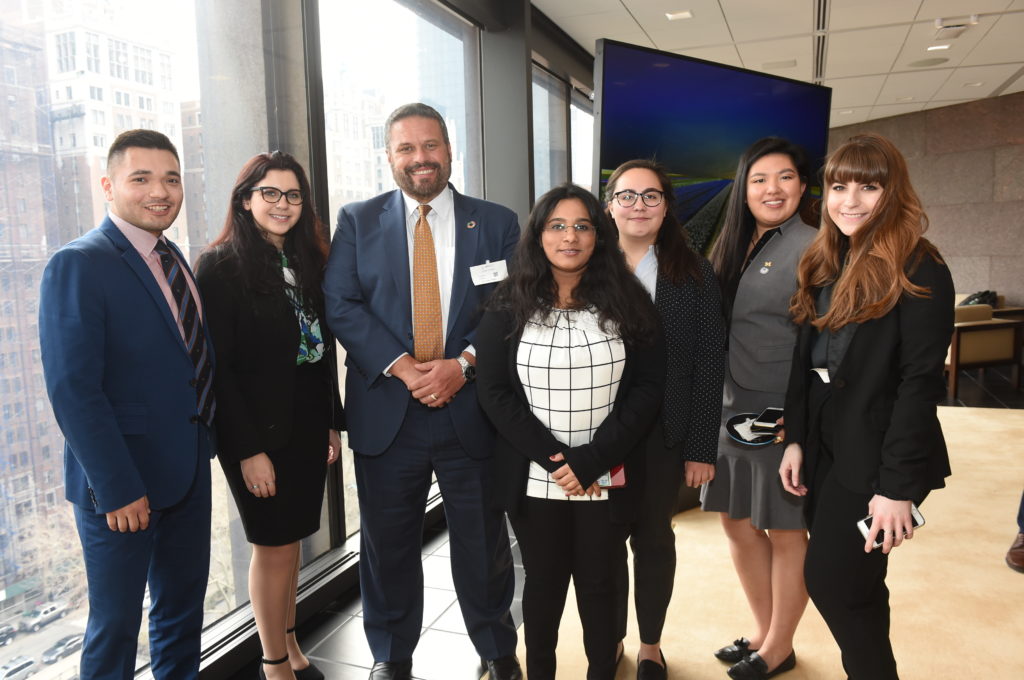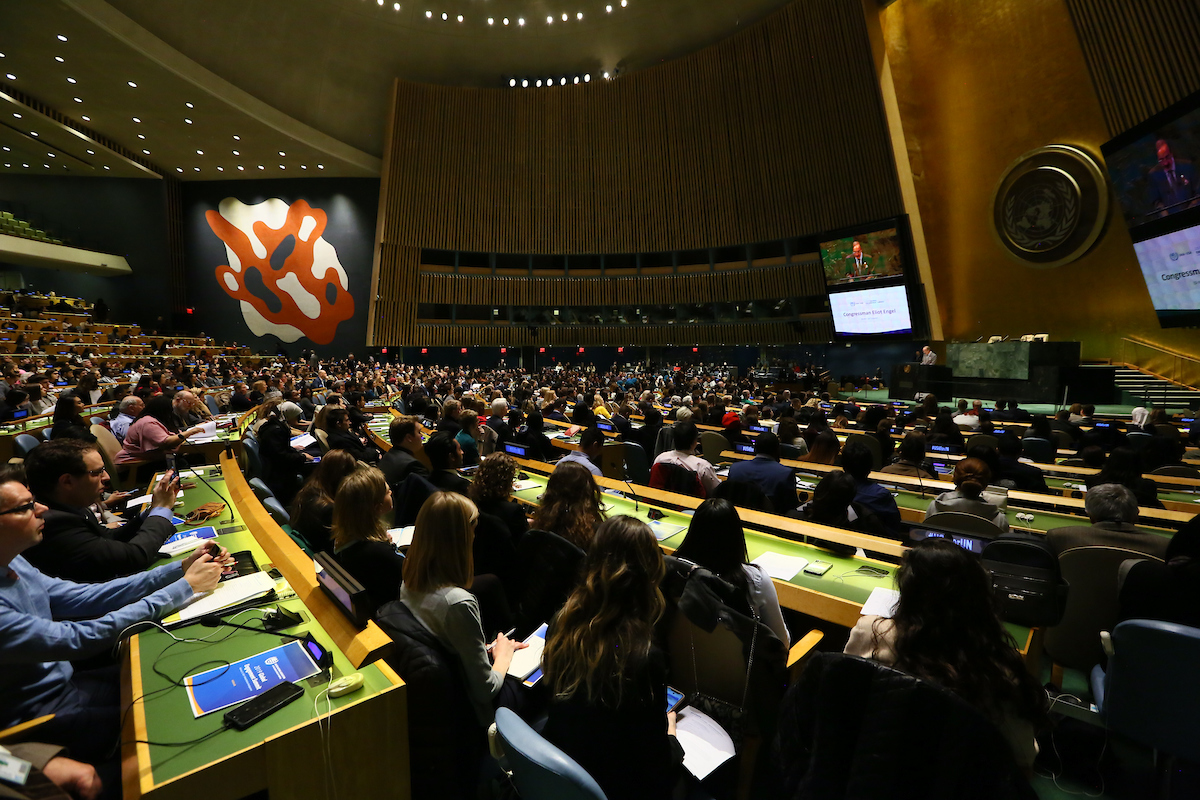Full Circles, Shared Causes
When I participated in UNA-USA’s Global Leadership Summit (GLS) last June in Washington, D.C., I had a vague idea of starting a campus chapter and no connections within the organization at all. Just seven months later, I went to the Global Engagement Summit (GES) in New York City as an intern for UNA-USA’s D.C. office. My experience at the summit reminded me of what, to me, is UNA-USA’s greatest draw: our identity as bipartisan advocates.
Back in June at GLS in D.C., I saw Representative Ed Royce, then chairman of the House of Representatives Foreign Affairs Committee, receive the Congressional Leadership Award. Chairman Royce’s presence confirmed my feeling that the UNA-USA movement has the same bipartisan nature that drew me to become interested and involved in foreign policy through organizations on campus as a conservative student.
Using information and connections from GLS, I co-founded the UNA-University of Michigan, Ann Arbor Chapter after I returned to campus. Then in January I came to intern for the national office in D.C. to deepen my involvement and focus more time on advocating for UNA-USA and its cause.
In a neat “full-circle” moment at GES, I met Tya, a student from Louisiana who was in New York for the same reason I had gone to D.C. last summer—to get a sense of the organization and gear up to start a campus chapter. At GES, the House Foreign Affairs Committee’s chairman in the new Congress, Representative Eliot Engel, gave a speech that reiterated to me UNA-USA’s commitment to reaching both sides of the aisle.

As an intern for the UN Foundation, I’ve had the privilege of interacting with people young and old from all corners of the country. In New York I was inspired by the members of our organization, from a student passionate about climate issues at NYU to a seasoned activist in Kentucky who has advocated for women’s issues and ending human trafficking for decades.
To me, the true strength in our messaging is that UN issues are not left issues or right issues; or top or bottom of the ladder issues; nor north, south, east, or west issues. They are human issues, they are home issues, they are safety and sanitation issues, they are fundamental issues. Regardless of party affiliation, we owe it to ourselves and each other to get on board and buckle up.
Frankly, the best way to produce results when advocating for a cause is to be politely, persistently passionate. At the end of the day you have far more commonalities with your fellow advocates for the UN than you have differences. If the person sitting next to you in New York wrote every opinion they had on every national and international issue down and compared them to your own list, they likely wouldn’t look the same. Even if you wrote down your top three policy priorities for the coming year in politics, they would look different. The great and powerful thing about UNA-USA is that we can overlook these differences and gather together to learn and advocate.
To me, UNA-USA represents a rare and bright spot in today’s political climate where advocates are not coming out or staying home based on party lines. When we gather at events like GES, we listen to and shake hands with individuals we would not have during a regular day. For at least a few days a year with the General Assembly Hall as a backdrop, in seats held by nations with vastly different agendas and ideas, we learn from them and see those on the other side of the aisle as allies and companions in our shared cause.
But it is not enough to stand united only twice a year during our national conventions. UNA-USA’s summits remind us that the UN needs us to stand for it throughout the year—together. As advocates, we carry this message and make it heard in our communities and to our elected officials. We must continue to fuel the fire we lit in New York now that we are back home. In that spirit, here are a few things you can do to advocate for the UN in your community:
- Thank a local official for work that furthers a UN cause. For example, did you know that several governors have committed to climate action through the reduction of greenhouse emissions in accordance with the Paris Agreement? Shoot a letter or a tweet to say thanks for their support of the UN’s SDG13 goal!
- Meet in-district with elected officials on the federal, state, or local level.
- Attend a town hall of your federal or state elected officials, identify yourself as a UNA-USA advocate, and ask a question about the Sustainable Development Goals, U.S. funding of the UN, or the U.S.-UN relationship.
- Coordinate community involvement in a UN or UNA initiative (Model UN, Adopt-a-Future, International Women’s Day, UN Day, etc.).
- Organize a “phone bank” event for members of your community to stop by and call members of congress.
- Represent UNA-USA at a community event such as a parade or fair.
- Obtain a declaration from local officials for UN Day (October 24) or Human Rights Day (December 10).
- Speak about UNA-USA and your motivations and experiences as an advocate for the UN at a community event.
- Formally arrange an event where you educate young people about the UN at school or community group.




